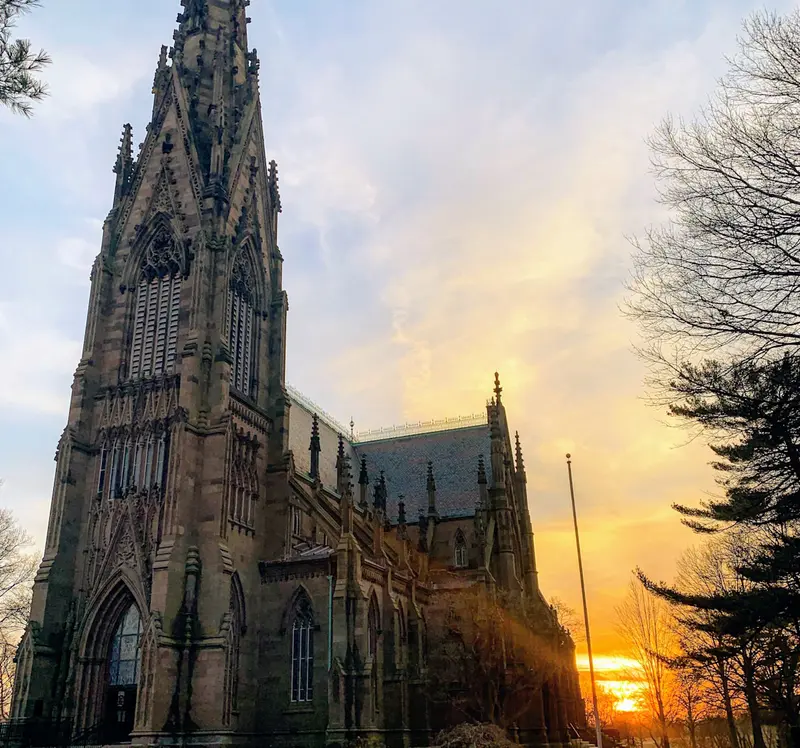Our home is the Cathedral of the Incarnation in Garden City, New York, America’s first cathedral town.
Location
The Cathedral Close includes the landmark 1885 Gothic Revival cathedral along with the Mercer School of Theology, the historic 1880 See House, overnight retreat accommodations and nearly 30 acres of open greenspace.
The cathedral is the Mother Church and seat of the Bishop of the Episcopal Diocese of Long Island, a diocese which includes Brooklyn, Queens, Nassau and Suffolk Counties. Click here for directions.
Cathedral Heritage
Cathedrals have served as houses of prayer and sites of pilgrimage from their first emergence, welcoming those who sought refuge and solace within their walls. Cathedrals of the Middle Ages in particular have sparked the imaginations of pilgrims, visitors, and worshippers for a thousand years.
Thomas Tweed writes that “Religion begins—and ends—with bodies . . .bodies [which] cross and dwell. They cross not only that ultimate horizon, but many other boundaries as well.” Religion at the Cathedral of the Incarnation has been and still is very much about bodies. The body of Jesus Christ, crucified, dead and risen, broken and shared. The bodies of generations of Christian people, the living and the dead —and our bodies, crossing the thresholds of sacred space and divine encounter, being transported and transformed by religious practice.
Reimagining The Cathedral Today
The Center for Spiritual Imagination therefore embraces the history of the cathedral as a place of holy hospitality and spiritual imagination: a sacred place where we live in this moment and beyond, where the story of God’s liberating work in the world is mediated through the sacred environment and the sacramental connections it inspires. We aim to inhabit the architecture of the cathedral in adaptive, spontaneous, and improvisational ways, allowing for a new generation of spiritual leadership. We are interested in the ways that spiritual bodies cross and dwell in space and time and culture. We are concerned with how our bodies cross the threshold of ritual environments and emerge to create a more just life and world. We are interested in discovering, through the exercise of spiritual imagination, what dynamic embodiments of the Christian life and practice might emerge in the 21st century.
